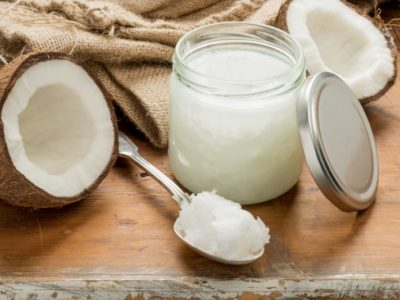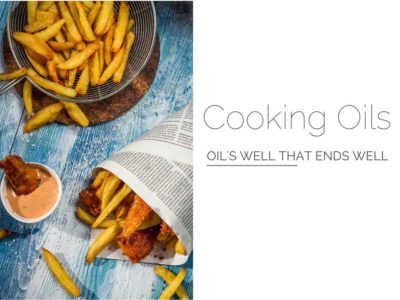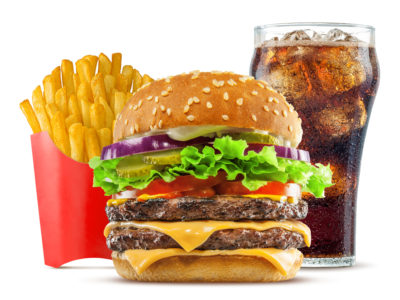Table of Contents[Hide][Show]
Omega-6 essential fatty acids (n-6) are getting a bad rap these days, but the problem may not be the n-6 itself. It’s the amount of it suddenly infiltrating our diet, not to mention the sources.
Health Benefits of Omega-6 Fatty Acids
N-6 is essential for:
- Cell formation and growth
- Brain development
- Brain function
- Muscle development
- Immune responses including inflammation
- Pain signaling
- Nerve communication
- Blood clotting
Healthy sources of n-6 include poultry, eggs, meat (grass-fed), high quality olive oil, avocados, nuts, and seeds.
From the media hype alone it could sound like n-6 needs to be avoided. Not entirely true. As you can see omega-6 fatty acids are a good and necessary nutrient, but too much of a good thing is still too much. It turns out that n-3 and n-6 compete for digestion and assimilation in the body and if n-6 wins, we lose.
At The Center for Genetics, Nutrition and Health, researchers reviewed anthropological, epidemiological, and biological studies to determine the original diet of human beings. The team concluded that we evolved consuming a 1:1 ratio, ie equal amounts of omega- 6 and 3 fatty acids.
In today’s Western diet, we’ve upped that ratio to an average of 15:1–16.7:1. Many among us have gone even higher, tipping the scales at 20-25:1. According to the review:
A high omega-6/omega-3 ratio, as is found in today’s Western diets, promotes the pathogenesis of many diseases, including cardiovascular disease, cancer, osteoporosis, and inflammatory and autoimmune diseases…
Evolutionary aspects of diet, the omega-6/omega-3 ratio and genetic variation
And these are among the primary causes of death in the USA. In 2010, a reported 4 in 10 deaths were the result of cardiovascular disease. Estimated new cancer diagnoses for 2013 is 1.6 million; estimated deaths in 2014 mount to over half a million. That’s more in one year than the number of American fatalities and woundings in the Iraq war since 2003, which shows total casualties just under 4,500 and woundings estimated over 100,000.
We should view these diseases as battle wounds and deaths as casualties of war because there is battle being waged. We’re being sold poison for food.
A New Food Group Introduces Toxic Levels of n-6
Industrial seed and vegetable oils have practically become a food group unto themselves. We might consider them to be at the bottom of what I call the “synthetic food pyramid” because they’re in everything.
Nearly all processed foods from dry packaged to frozen and even fresh baked goods are filled with these heart-harming oils that are extremely high in n-6. The vegetable oil industry has either played along with or orchestrated the demonization of healthy saturated fats such as from grass-fed butter and coconut oil.
As a result many of us added “heart healthy” canola or corn oil to our pantries, not realizing that these caused a detrimental imbalance of omega 6:3 in our diet. The more processed foods we eat, the worse the situation gets. Even certain restaurants boast that they cook with vegetable or canola oil apparently unaware that these cause disease and death.
Related
Is Coconut Oil Good for YOU?
Coconut oil has been celebrated for its medicinal benefits for thousands of years and the popularity of this superfood continues to prove itself as a wonder for both the brain and body. With over 1,700 studies exclaiming coconut oil’s benefits, where does one begin on the journey to better health by way of MCT’s? Let’s …
The Rise of Rancid Oil
We’ve talked about the unnaturally high dose of n-6 we get by consuming vegetable and seed oils. But there’s more. Much of the touted “heart healthy” vegetable and seed oils on the market are inherently toxic.
First, the product you find in a bottle of “vegetable oil” does not occur in nature. These are called industrial oils because the vegetable-sources contain minuscule amounts of fat and require a harsh, unnatural or “industrial” chemical process for extraction.
This is usually where the toxic solvent hexane comes in. Even seed oils have a higher fat content but warrant much of the same processing. They’re heated to high temperatures that kill off antioxidant and other nutrient content. Then, they are further filtered, deodorized, bleached, de-gummed, and more.
All of this achieves an artificial color, flavor, and consistency that pleases the marketing demon and appalls the human body. Reportedly, none of the processing manages to remove pesticide residues. Toxic perfection achieved.
What’s more, damage caused by the extreme heat causes immune and health depleting free radicals to multiply in the oils. Then when you use them for cooking…yup, you add more heat, more radicals, more inflammation, and, ultimately, more disease.
If you enjoy commercially fried foods like french fries or chicken fingers be aware that the oil they’re cooked in is used and reused, increasing the rancidity and the health-assaulting free radicals.
Second, diets high in n-6 promote oxidation of LDL “the bad” cholesterol. More insightful researchers such as Chris Masterjohn have reported that LDL itself isn’t bad. What’s bad is when LDL becomes oxidized. When the lipid goes rancid in the blood it releases free radicals causing an immune response. To insulate the free radical and protect the heart, our bodies build a plaque fortress around it.
One instance of creating plaque around some rancid cholesterol is good. Chronically, the plaque accumulates and “hardens” the arteries. As you know, that’s bad. With repeated offenses we develop atherosclerosis and chronic inflammation, leading also to insulin resistance, diabetes type 2, imbalance in the thyroid, and the beat goes on.
Related
What Is Oxidative Stress and How Is It Affecting You?
What is oxidative stress? Learn its causes and signs, linked medical conditions, and how to reduce it with antioxidants and lifestyle choices.
Symptoms of a High Omega 6:3 Ratio
As we said earlier, n-6 competes with n-3 for assimilation. Omega-6 is pro-inflammatory, and that’s good when we sustain an injury and need the healing response. They’re also necessary for pain-signaling, a brilliant way of causing us to immediately withdraw from harm such as fire. If we felt no pain we wouldn’t know to run from it. But when we have too much of the stuff we’ll also have more pain, inflammation, and just as significantly, less assimilation of n-3.
Symptoms of an inflated 6:3 ratio and omega-3 deficiency include:
- Cognitive decline/poor memory
- Alzheimer’s disease
- Insomnia
- Fatigue
- Infertility
- Emotional and mental disorders such as depression, anxiety, violence, or ADHD
- Schizophrenia
- Addiction
- Poor immunity
- Dry skin or other skin conditions such as eczema and psoriasis
A Simple Answer to Lower Your Omega 6:3 Ratio
The good news is that consuming more fish and seafood will help to lower your omega 6:3 ratio and improve the situation. A review of the studies summarized a few key points:
- Omega-3 fatty acids are anti-inflammatory.
- In abundance, n-3 suppresses the negative effects of excessive n-6.
- In people with a genetic predisposition for heart disease, n-6 increases their risk, but n-3 EPA and DHA decrease risk.
- Sufficient supply of n-3 is associated with lowered disease rates, while deficiency correlates with an increased risk of heart disease, stroke, and even psychiatric illnesses.
Researchers at The Center for Genetics, Nutrition and Health concluded with a simple answer:
A lower ratio of omega-6/omega-3 fatty acids is needed for the prevention and management of chronic diseases.
Evolutionary aspects of diet, the omega-6/omega-3 ratio and genetic variation
And it doesn’t have to be 1:1 to see results. Author, health expert, and radio host, Chris Kresser, cites a study on this topic, which found that reaching “an n-6:n-3 ratio of 4:1 led to a 70% decrease in total mortality.”
How to Improve Your EFA Profile Immediately
To have an immediate positive impact on your omega fatty acid profile:
- Up your n-3 intake by eating 2-3 servings of fatty fish such as salmon and tuna each week.
- Consider whether you need a high quality, food source supplement such as krill oil.
- Toss the these unnatural high omega-6 fats from your cupboard and throw out processed foods that contain them (today!):
- canola oil
- corn oil
- cottonseed oil
- vegetable blend oil
- soybean oil
- safflower oil
- grapeseed oil
- sunflower oil
- rice bran oil
- margarine and other “buttery” spreads
- hydrogenated or partially hydrogenated oils
- trans-fats
In place of them enjoy organic, extra-virgin, cold pressed:
- Olive oil
- Flaxseed, walnut, and peanut oils
- Sesame oil
As well as:
- Raw organic coconut oil
- Organic grass-fed butter
- Rendered fat from cooking healthy meats
- High fat seafoods
- Avocados
A Word On Upping Your n-3
Plant sources of n-3 such as flax, hemp, and chia are inferior to animal sources because the body is taxed to convert ALA to the more vital EPA and DHA. The most potent food sources of n-3 are fish and seafood. Experts also recommend krill oil as a superior source of healthy omega-3s; just make sure you buy from a clean and reputable brand. Other expert-favored food supplements include fermented cod liver oil and fish oils from wild salmon or sardines.
You May Also Like…






